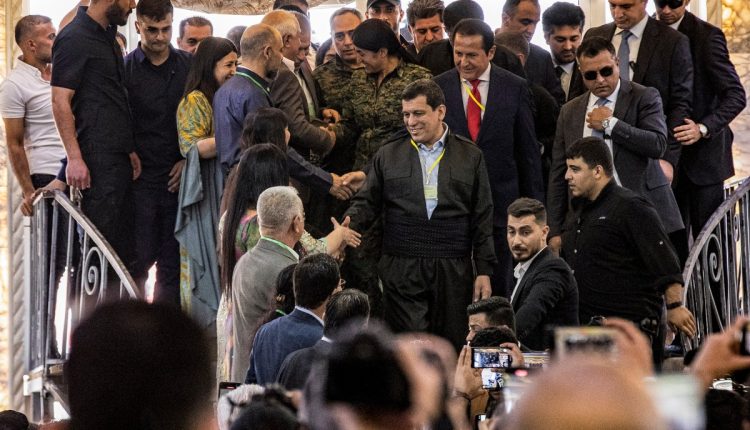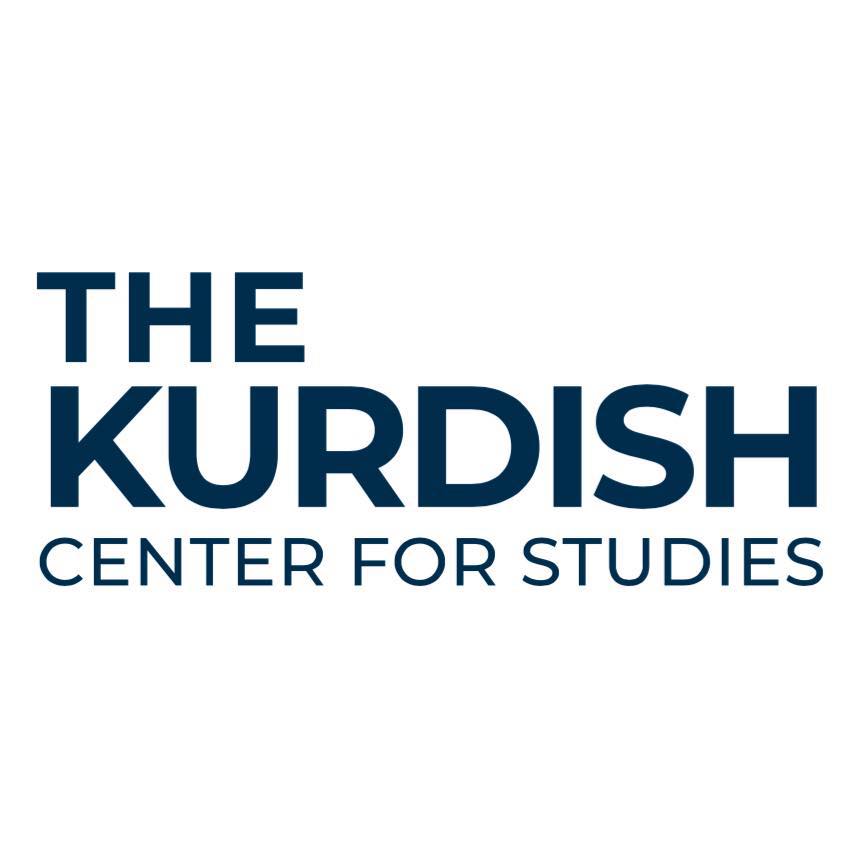Syria Between Two Founding Declarations: A New Vision for a Democratic Pluralistic State
By The Kurdish Centre for Studies
In two different historical contexts, more than a hundred years apart, two political statements or declarations emerged, reflecting the aspirations of Syrians toward independence and building a national state in Syria: the first is the ‘Declaration of the General Syrian National Congress’ (1920), and the second is the ‘Declaration of the Kurdish Unity Conference’ (2025).
This comparative reading recognizes the different historical, social, political, and representational circumstances that produced the two declarations, as well as the different epistemological perspectives and approaches involved. However, it considers both to be efforts by Syrians facing major existential challenges.
The Nation and the State
Both declarations speak on behalf of Syria and Syrians. The 1920 declaration focused on Arabs within the framework of the ‘Syrian Arab Nation,’ emphasizing Arab identity as the foundation of the emerging state, which was conceived as a constitutional monarchy with limited administrative decentralization.
In contrast, the Kurdish declaration of 2025 recognizes Syria as a multi-ethnic (Arab, Kurdish, Syriac, Assyrian, etc.), multi-religious, and multi-confessional state. It establishes a decentralized federal system that guarantees the political unity of Kurdish regions within the framework of the Syrian state. This vision moves beyond the traditional ‘majority and minority’ model to one that acknowledges diversity as a constitutional asset.
The Constitutional Structure
The 1920 Declaration provided for a parliamentary monarchy with a responsible government accountable to a parliamentary assembly, but it did not specify detailed mechanisms for the separation of powers or guarantee political pluralism. The Kurdish Declaration of 2025 adopts a parliamentary system with two legislative chambers, emphasizing political pluralism, peaceful transfer of power, separation of powers, and ensuring fair representation of various components in legislative, judicial, and security institutions. It also commits the state to adopt ‘supra-constitutional principles’ to protect human rights and ensure equal citizenship.
Cultural Rights and Decentralization
The 1920 Declaration was limited to an abstract affirmation of ‘minority rights’ and ‘administrative decentralization,’ without elaborating on mechanisms for protection or representation. In contrast, the 2025 Kurdish declaration provides unprecedented details, such as regional councils within the framework of a decentralized system, ‘the unification of Kurdish regions within an integrated political-administrative unit within a federal Syria,’ allocating a percentage of local resource revenues for the development of Kurdish regions, reforming unjust administrative divisions, recognizing Kurdish as an official language alongside Arabic, restoring citizenship to those stripped of it since the 1962 census, repealing Arabization policies, and establishing Kurdish educational and cultural institutions.
Effective Pluralism
In the context of analyzing the two mentioned texts, radical differences in societal visions and mechanisms for dealing with pluralism emerge. The Kurdish Manifesto shows a qualitative development in understanding the complexities of Syrian diversity, while the 1920 Declaration reflects a classic model of a unitary nation-state, in terms of social structure, identity, and diversity or social pluralism. Here, the 1920 Declaration was based on the concept of the ‘Syrian Arab nation’ as a homogeneous or semi-homogeneous entity, marginalizing internal ethnic and cultural diversity. This vision reflects an ‘assimilationist model’ in sociology, whereby sub-identities are assumed to dissolve into the dominant Arab identity. Despite the reference to ‘minority rights,’ no mechanisms are specified to protect non-Arab cultures, reinforcing the risk of symbolic exclusion of Kurds, Syriacs, Assyrians, Armenians, and others.
The Kurdish Manifesto of 2025 adopts an interactive pluralist model that recognizes multiple identities as the basis of the state. It defines Syria as a ‘multinational state,’ reflecting a sociological understanding of identity entanglement, where identities coexist without contradiction. This model reduces identity conflict by constitutionally recognizing languages and cultures, which is vital in an ethnically fragmented society like Syria.
As for managing diversity, the 1920 Declaration dealt with diversity through ‘limited administrative decentralization’ without guarantees for the rights of non-Arab cultures. This approach is similar to the ‘passive tolerance’ model, where groups are granted some freedoms without actual empowerment. In sociology, this approach is considered insufficient to build trust between groups, especially in light of a long history of marginalization. The Kurdish Manifesto of 2025 adopts ‘institutionalized empowerment’ instead of exclusion, through concrete mechanisms, such as recognizing the Kurdish language as an official language, which promotes integration without losing cultural identity, restoring citizenship to those stripped of it since the 1962 census, and implementing policies that rectify historical injustices. These policies exemplify the model of ‘positive discrimination,’ which acknowledges historical inequalities and works to correct them, playing a central role in the effective management of diversity.
Grievances and Roots of Conflict
The 1920 Declaration ignored the historical grievances of non-Arab components and religious groups that are not Muslim or not Sunni. Although the drafters of the declaration came from various national, religious, and geographic backgrounds, they were generally influenced by the majority component. This served as a foundation for a form of “foundational discrimination,” if I may call it that, which Syria continues to suffer from to this day.
As for the Kurdish statement, it seeks to address the roots of ethnic and communal conflict, focusing on a multicultural society and a supra-constitutional pluralistic state, if I may use that term. The Kurdish declaration emphasizes demands such as canceling the results of demographic changes as a step toward restoring rights, compensating those harmed by policies of discrimination—such as victims of the “Arab Belt”—and adopting Nowruz as a national holiday as a symbol of recognition of Kurdish culture. These measures are necessary to repair damaged social relations through acknowledgment of grievances and compensation.
Social Cohesion and National Identity
The 1920 declaration focused on territorial unity without fostering cultural bridges among the components, which could lead to social fragmentation if ethnic and sub-ethnic demands escalate. It also confines social identity to the state and authority, risking disintegration at the first socio-ethnic conflict. The Kurdish Manifesto of 2025 proposes a model of ‘multi-level citizenship,’ whereby an individual can simultaneously identify with a local (Kurdish/Arab) and a national (Syrian) identity. This approach aligns with theories of ‘integration without assimilation,’ which aim to preserve diversity while maintaining national unity. The manifesto supports this model of social cohesion through the call for:
- -A ‘federal system of government’ balancing central authority and -regional autonomy,
- -‘Regional councils’ that reflect local cultural specificities,
- An ‘inclusive national identity’ rooted in pluralism.
External Factors
But the role of external actors is strong in both the Declaration and the Manifesto. The Declaration relied on the promises of the Allies to establish a large state, but in reality, what was created was a much smaller state. In fact, the external powers agreed on a French mandate over the new state (as per Sykes-Picot or colonial mandates). Later, parts of this territory were carved out to Turkey and Lebanon. External influence is also present in the Kurdish manifesto, which considers external support as a force to be relied upon in the process of building a viable state.
The Kurdish manifesto calls for a ‘constituent assembly under international auspices’ to grant the political process international legitimacy and to reduce the risks of external interference, especially from Turkey, which asserts it will not permit a decentralised or federal state. This approach, reflected in the Kurdish statement, reveals an overlapping understanding of the situation in Syria: a recognition of the need for independence from external influence, combined with reliance on external support. Clearly, external actors are not a single, unified entity.
Managing Diversity
The Kurdish Manifesto demonstrates a notable evolution in addressing ethnic diversity in Syria, compared to the 1920 Declaration. It seeks to shift from a mono-nationalist vision that marginalizes pluralism to a framework that institutionalizes the management of diversity through mechanisms of cultural, economic, and legal empowerment. However, the success of this model depends heavily on its implementation within a complex social and political context, where demands from various groups must be balanced carefully—without provoking new conflicts or justifying accusations, suppression, or even threats of extermination against groups with legitimate grievances.
In this regard, societal dialogue and political flexibility are crucial, alongside international support to prevent Syria from descending into authoritarianism or chaos. Today, Syria exhibits both: authoritarianism and chaos.
A Founding Document
The 1920 Declaration was a pioneering step toward political independence, but it remained bound by a singular vision of Arab identity. While it was progressive by the standards of its time, it was centered on Arabism and Islam, which would shape Syrian politics for decades to come. In contrast, the Kurdish manifesto serves as a foundational document for a Syria of the 21st century, redefining society and the state based on national and cultural pluralism. It integrates Kurdish national demands with the rights of other components, supported by constitutional and practical guarantees to ensure justice and decentralization. This shift from the ‘nation-state’ model to a ‘multinational state’ provides the Kurdish manifesto with a necessary and unprecedented depth and comprehensiveness to address the complexities of contemporary Syrian reality.
Ultimately, the Kurdish document presents a vision of a ‘post-modern Syria,’ where diversity is not seen as a burden but as a source of strength. The state is envisioned not as a monolithic entity but as a mosaic of coexisting identities. Moving from the ‘nation-state’ model, characterized by authoritarianism and ethnic or sectarian dominance, to a ‘democratic nation’ may be the only way to guarantee Syria’s security and stability in the 21st century




Comments are closed.